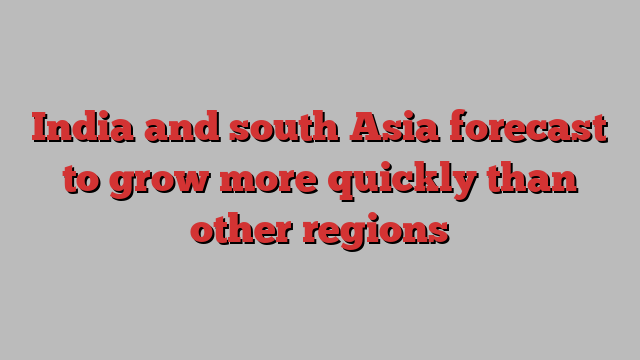
Receive free Asia-Pacific economy updates
We’ll send you a myFT Daily Digest email rounding up the latest Asia-Pacific economy news every morning.
India and its neighbours are expected to grow more quickly than any other region this year, the World Bank said, defying gloomy outlooks for China and much of east Asia.
The bank on Tuesday raised its 2023 forecast for growth in south Asia, which also includes the likes of Pakistan, Bangladesh and Sri Lanka, from 5.6 per cent to 5.8 per cent.
The fast growth in south Asia contrasts with the situation in China and east Asia, which are set to grow at one of the slowest rates in five decades as the region struggles with US protectionism and rising debt, the bank said this week. It expects China to grow 4.4 per cent in 2024, compared with India’s 6.3 per cent.
South Asia’s growth makes it the “kind of the polar opposite” of China and east Asia, Franziska Ohnsorge, the World Bank’s chief economist for south Asia, told the Financial Times.
However, the bank warned that growth in south Asia would not be fast enough to meet regional governments’ targets to reach high-income status within a generation, leaving them facing long-term challenges including poverty and high debt.
“This region really does have strong fundamentals simply because it’s got a young workforce, it’s got lots of room for catch-up,” Ohnsorge said. “Compared to other regions, it’s likely to do well. But if you compare to [their] development goals . . . it’ll be difficult to be optimistic because there’s just such a long way to go.”
Average per capita income in south Asia of about $2,000 is only one-twentieth that of high-income countries.
The World Bank also said it expected slower growth for south Asia than before the Covid-19 pandemic, with the outlook threatened by climate change and weaker global demand.
India this year eclipsed China as the world’s largest country by population, with more than 1.4bn people. Global investors hope the country can replicate the growth they enjoyed in China in recent decades.
Indian authorities have sought to implement business-friendly reforms to boost private investment, including building infrastructure, introducing incentives for manufacturing and easing strict labour laws.
However, many economists argue that India needs much faster growth to generate jobs for its enormous population.
Regional growth in south Asia is expected to be helped by recoveries in Pakistan and Sri Lanka, which have both endured severe crises over the past year. Sri Lanka, which defaulted on its debt last year, is expected to grow 1.7 per cent next year after a contraction this year. Pakistan is also expected to return to modest growth of 1.7 per cent next year.
“This potential for long-term, sustainable growth is broadly stable,” Ohnsorge said. “The only problem with this region will be that if the whole rest of the world slows, it’s very difficult to maintain that growth momentum.”